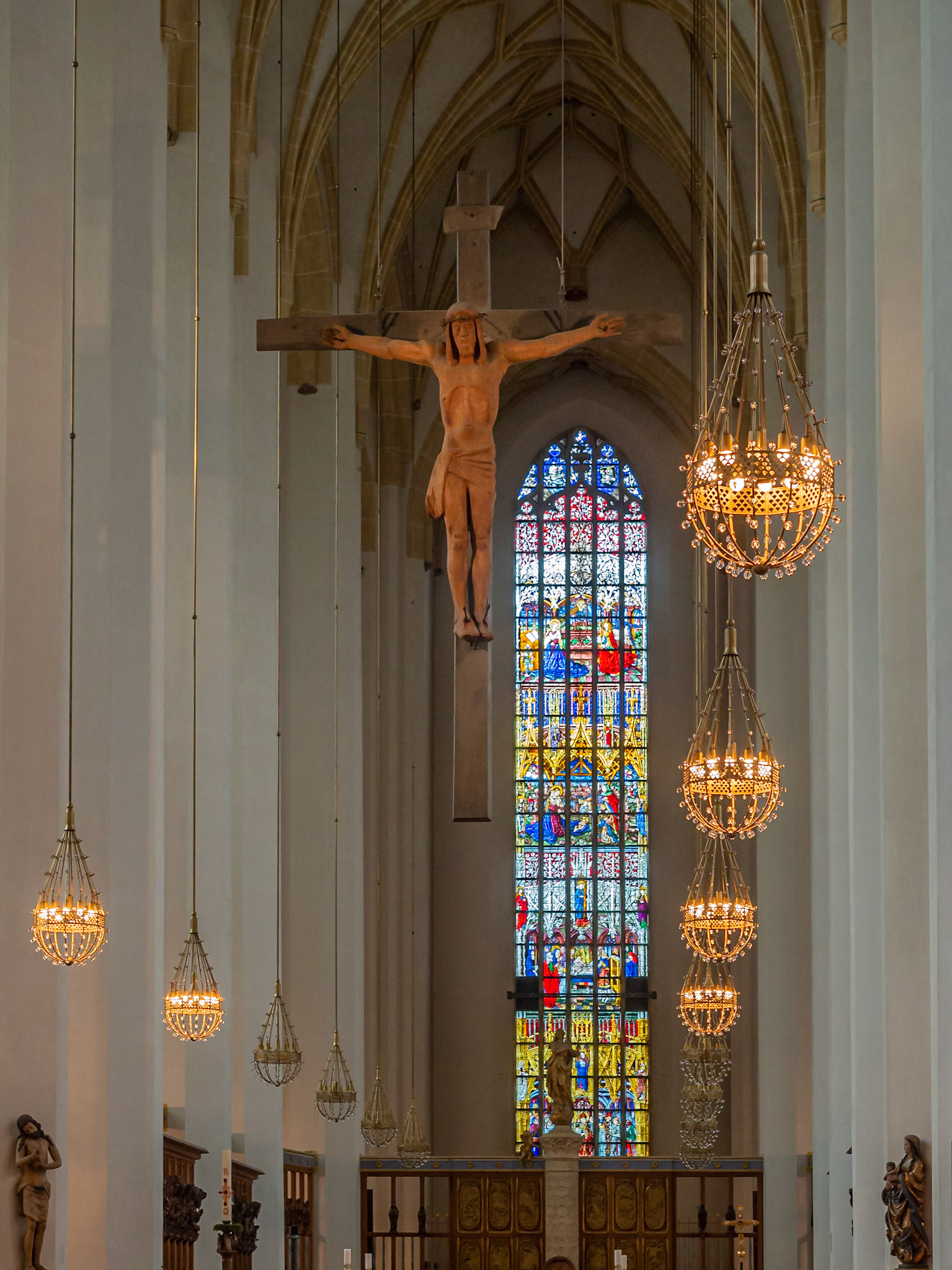In May 2019, we took a cruise on the "Blue Danube" with Dan's cousin from Texas. The cruise started in Budapest and sailed upstream to Passau, Germany. At the end of the cruise, we took a train to Rothenburg, Germany and then to Munich. Below are some of our favorite photos of the trip.
As you scroll through the grid of pictures, if you click on a picture it will be displayed in full screen mode. You can then navigate through the photos by clicking on the arrow that pops up on the side of the images. To get back to the grid, your cursor to the upper right corner and click on the X that appears.

Shoes on the Danube Bank Memorial is a reminder of the horrors faced by Jews in Budapest during World War II. Facist Arrow Cross militiamen ordered them to take off their shoes and then shot them along the water's edge so their bodies would be carried away in the current.

Moon making initial appearance over the Hungarian Parliament

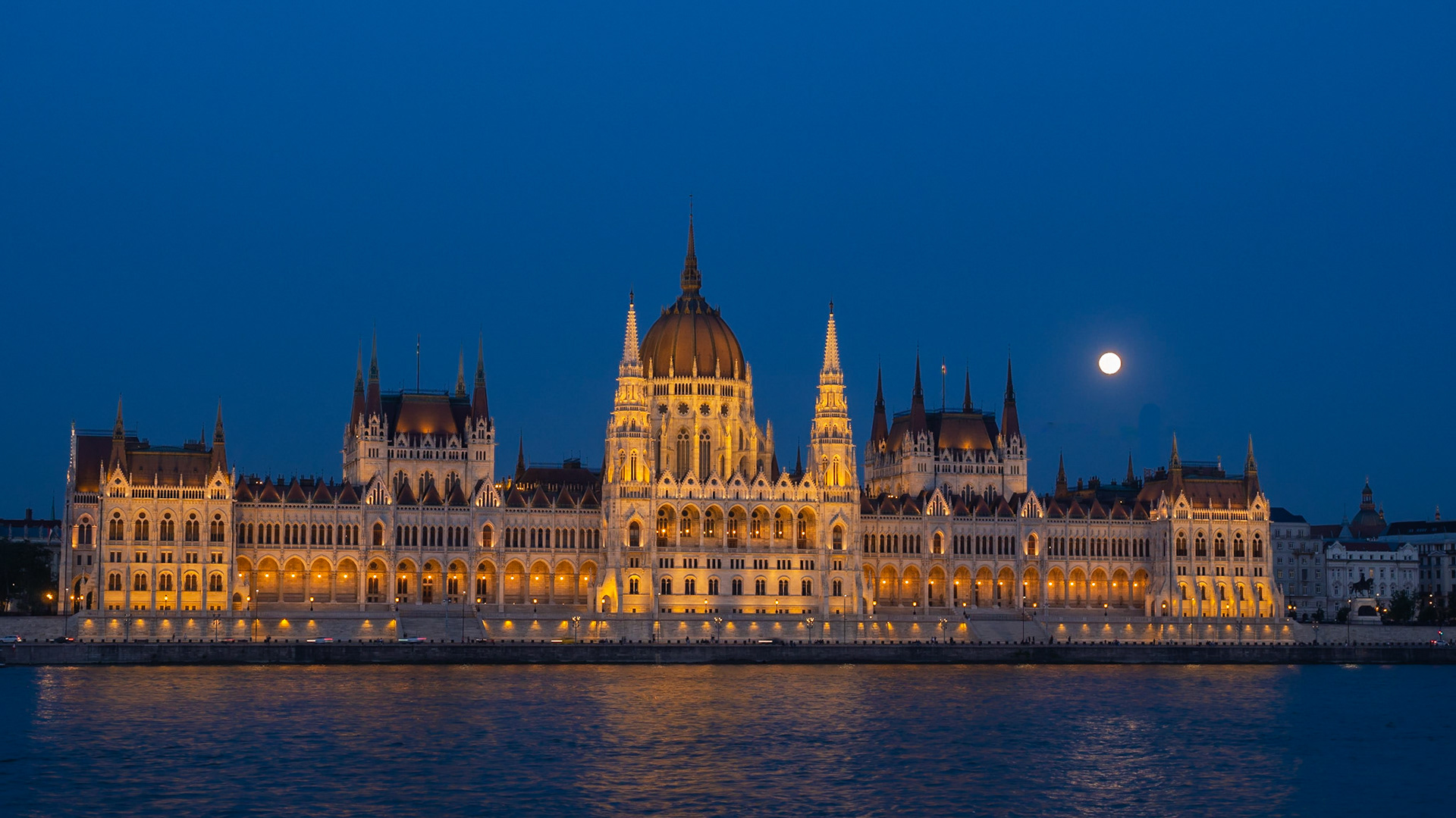
Parliament Building as the lights start to come on

Budapest at night


Dohany Synagogue

The Main hall and the Grand Stairway of the Parliament Building


An honored craftsman

"Evil"
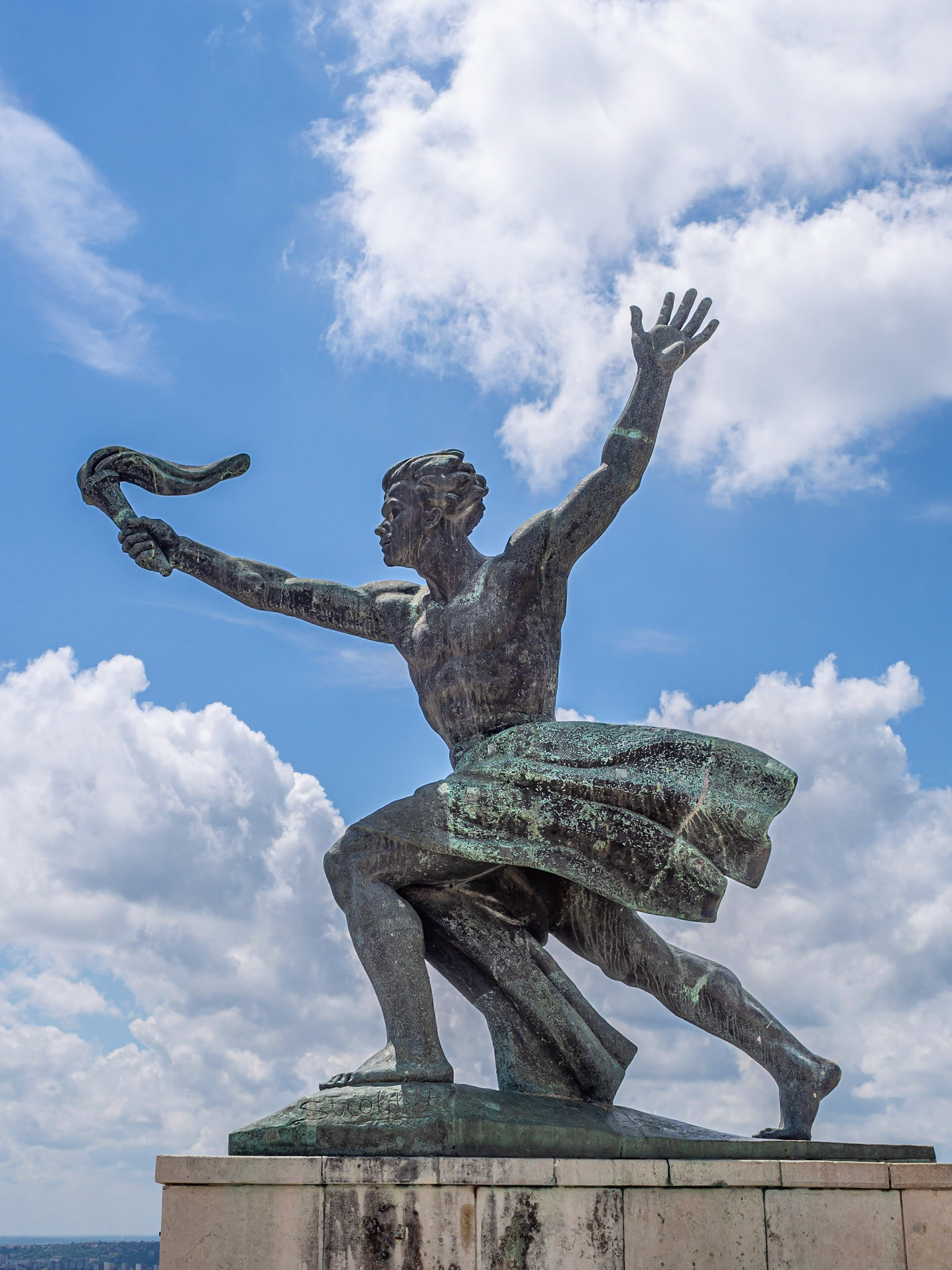
"Progress"

The Liberty Monument

Matthias Church

Between the Matthias Church and Fisherman's Bastion stands a statue of the first christian king of Hungary, St. Stephen.
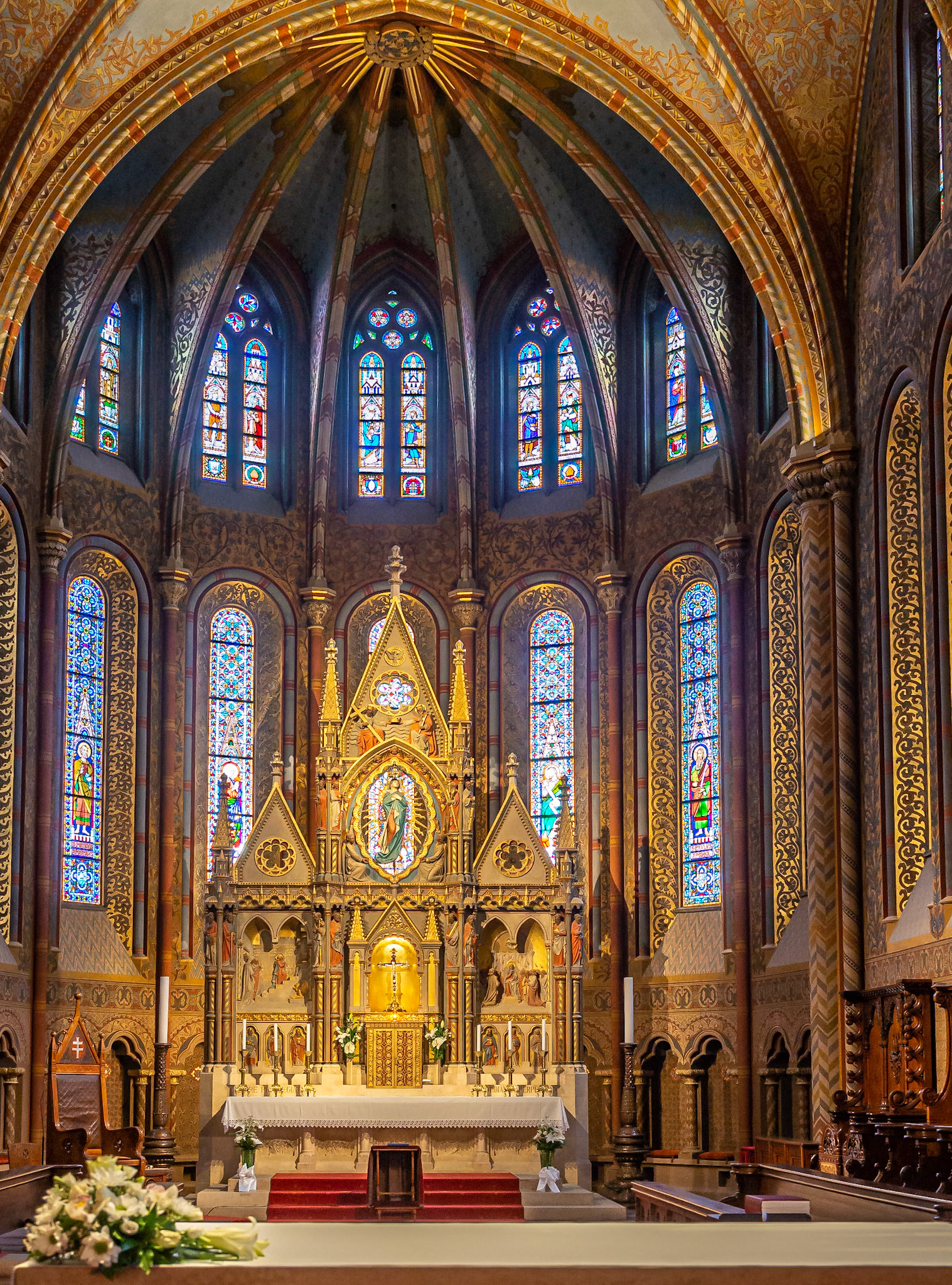
The main altar

A side chapel

The winged altar with paintings by the Hungarian painter Mihaly Zichy (1827-1906) shows scenes of the life of Prince Saint Imre (1007-1031), the son of King Stephen I of Hungary.

This circular window is above and to the right of a Neo-Roman baptismal fountain. The leftward skew of the spiral enables the circular opening on the inner surface of the wall to align with the baptismal fountain. The matched imagery of the four streams in the stained glass and through the spiral flow both visually and symbolically to the water-involving baptismal fountain. The lamb at the top of the hill from which the streams flow represents Jesus, the Lamb of God.

Fisherman’s Bastion surrounding the church. This sparkling white terrace has seven towers representing the seven tribes of Hungarians (i.e., Magyars) that settled in the Budapest area in 896. It provides a great view of Pest across the Danube.

View across the Danube from Buda Hill

View of St. Stephen's Basilica from Fisherman's Bastion

Hungarian National Gallery in Buda Castle

Stairs going up to Buda Hill. The gathering storm clouds just outside the frame of this photo prompted us to maintain a hasty pace back to our ship. It was a good thing because as soon as we set foot aboard, hail pelted down from those clouds.

Michael's Gate is the only city gate of the medieval fortifications that has been preserved and ranks among the oldest town buildings. Built about the year 1300, its present shape is the result of baroque reconstructions in 1758, when the statue of St. Michael and the Dragon was placed on its top.

Old town hall and the Main Square
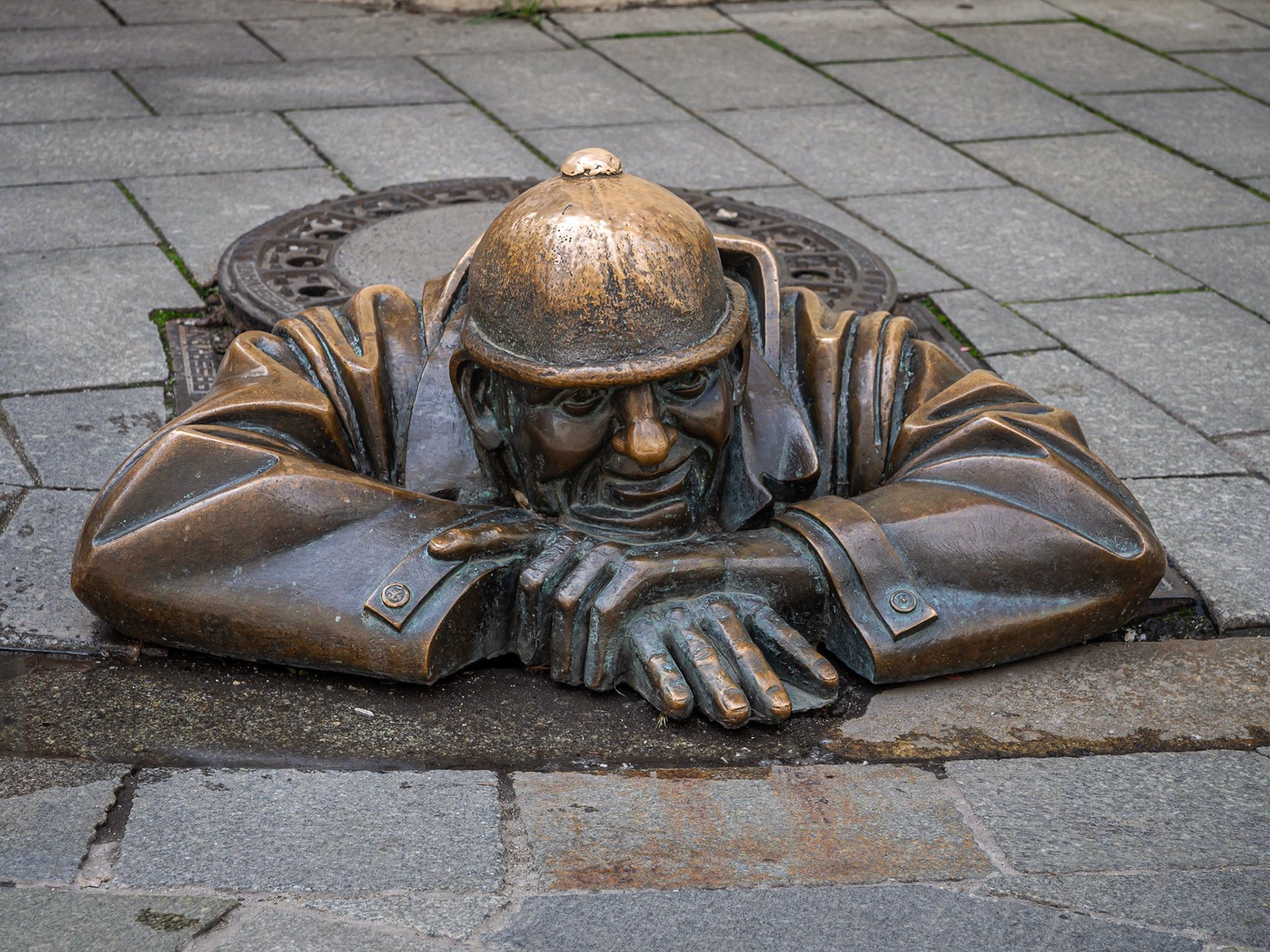
Čumil – Man at work. The literal translation of the word Čumil is "the watcher.“ There are two possible explanations for its name. The first rumor says that he is a typical communist-era worker who is not bothered about the work he’s supposed to be doing. According to the second rumour, he’s looking under the women’s skirts.

The Vienna Plague Column is a Holy Trinity column erected after the Great Plague epidemic in 1679.

St. Stephen's Cathedral marks the heart of Austria's capital. Even today the cathedral's Gothic south tower, completed in the mid-15th century, still dominates the skyline. The roof of the cathedral is decorated with more than 200,000 glazed tiles. On the other side of the cathedral, the tiles form enormous mosaics depicting a double headed eagle (symbol of the Holy Roman Empire) and the coats of arms of Vienna and Austria.


The history of Dürnstein Abbey starts in 1372 when Elizabeth of Kuenring had a chapel built in her castle. It was dedicated to the Assumption of the Virgin Mary. In 1410 she invited the Augustinian-Canons from Wittingau in Bohemia to take over the pastoral care and thus started Dürnstein Abbey. During the following century the church, the cloister and the monastic building were constructed and enlarged. The bell tower of the abbey church dating back to 1733 is the most remarkable building of the complex and, due to its blue-white colour, became the landmark of the Wachau Valley. Emperor Joseph II dissolved many abbeys including Dürnstein Abbey. On the January 7, 1788 it was incorporated into the Abbey of the Augustinian-Canons of Herzogenburg, to which it still belongs today. On the hill behind is the castle remains where Richard the Lionheart was imprisoned in 1192.

The Roman Catholic parish church dedicated to the Feast of the Assumption of Mary in Weißenkirchen dominates the town. The fortified church includes three corner towers.


Schloss Schönbühel is a castle dating to the early 12th century.

Catholic church in Emmersdorf

Melk Abbey

Entrance to church at Melk Abbey
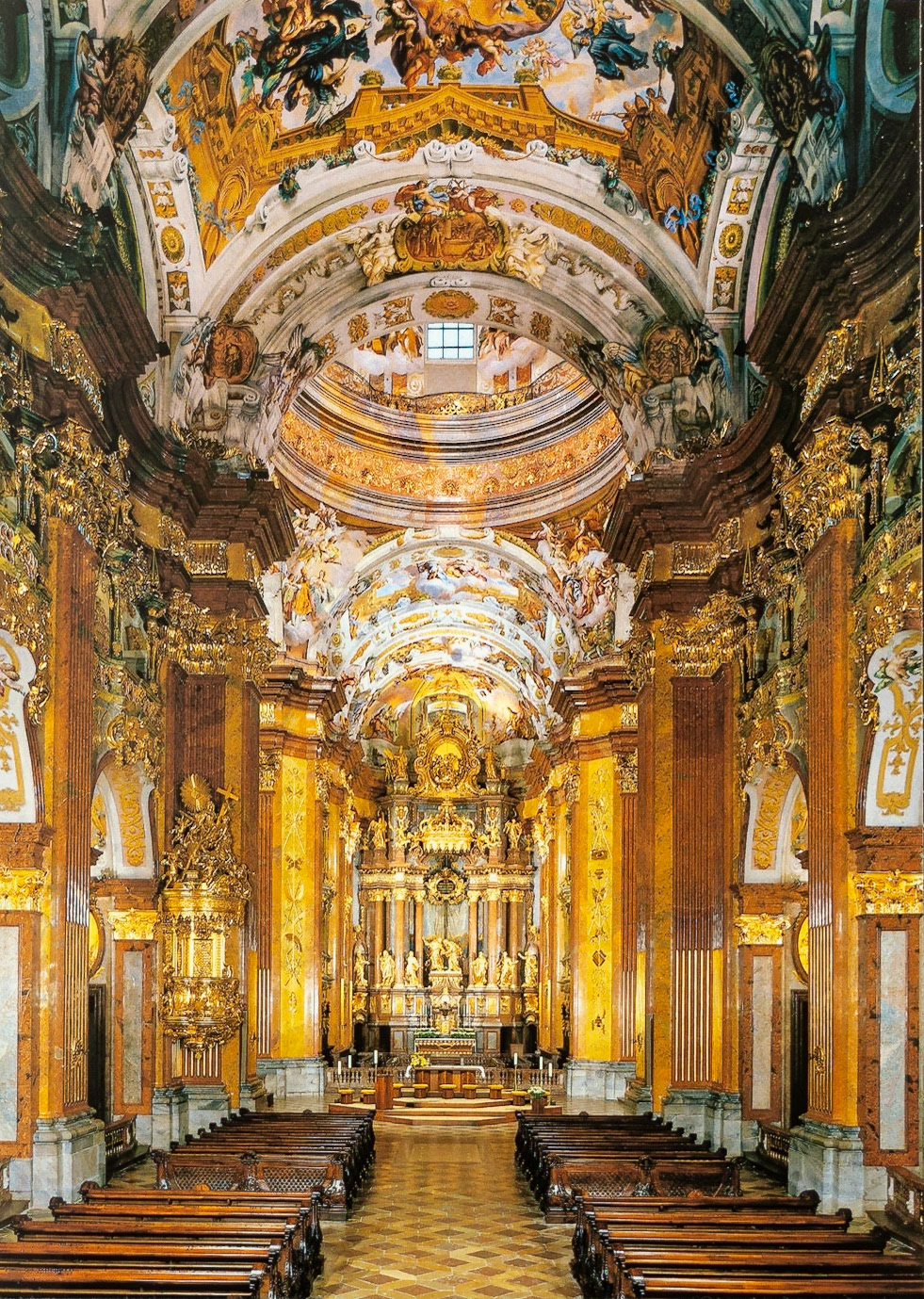
Inside Melk Abbey church. We weren't allowed to take pictures, so this is from a postcard.

Saint Michael's Church in Mondsee

Inside Saint Michael's Church, where the wedding was held in "The Sound of Music"

Equestrian statue in Mirabell Gardens

Arbor in Mirabell Garden used in "The Sound of Music"

View of Hohensalzburg Fortress
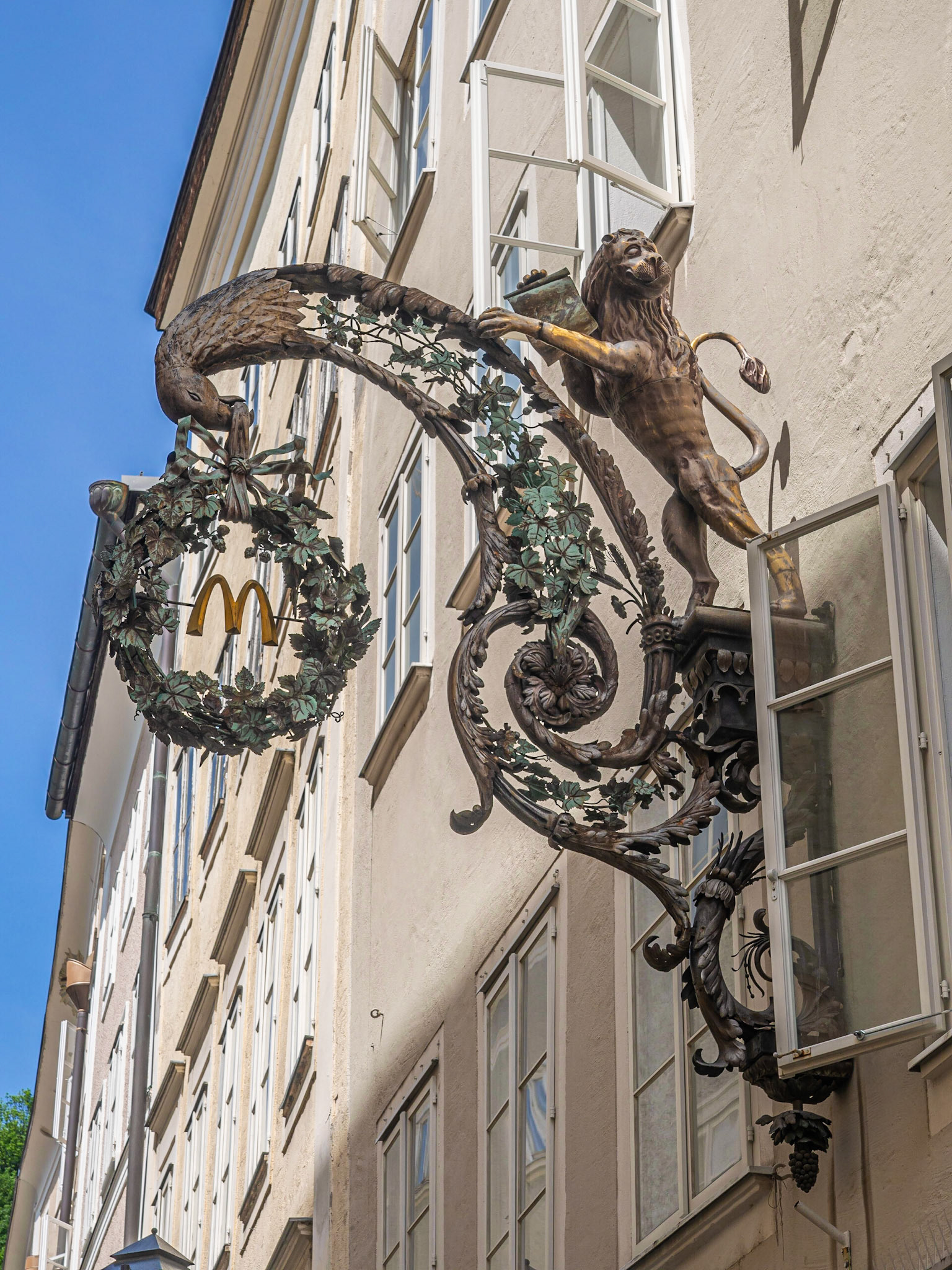
According to our tour guide, this is one of oldest guild signs in Salzburg—this one for a famous place to eat. The arches were added to the sign more recently.

Residenzplatz Fountain seen in "The Sound of Music"

A view of the Alps and Germany (not Switzerland) beyond

Gate to the Nonnburg Abbey, where the children came looking for Maria in "The Sound of Music"

View of Salzburg from Hohensalzburg Fortress
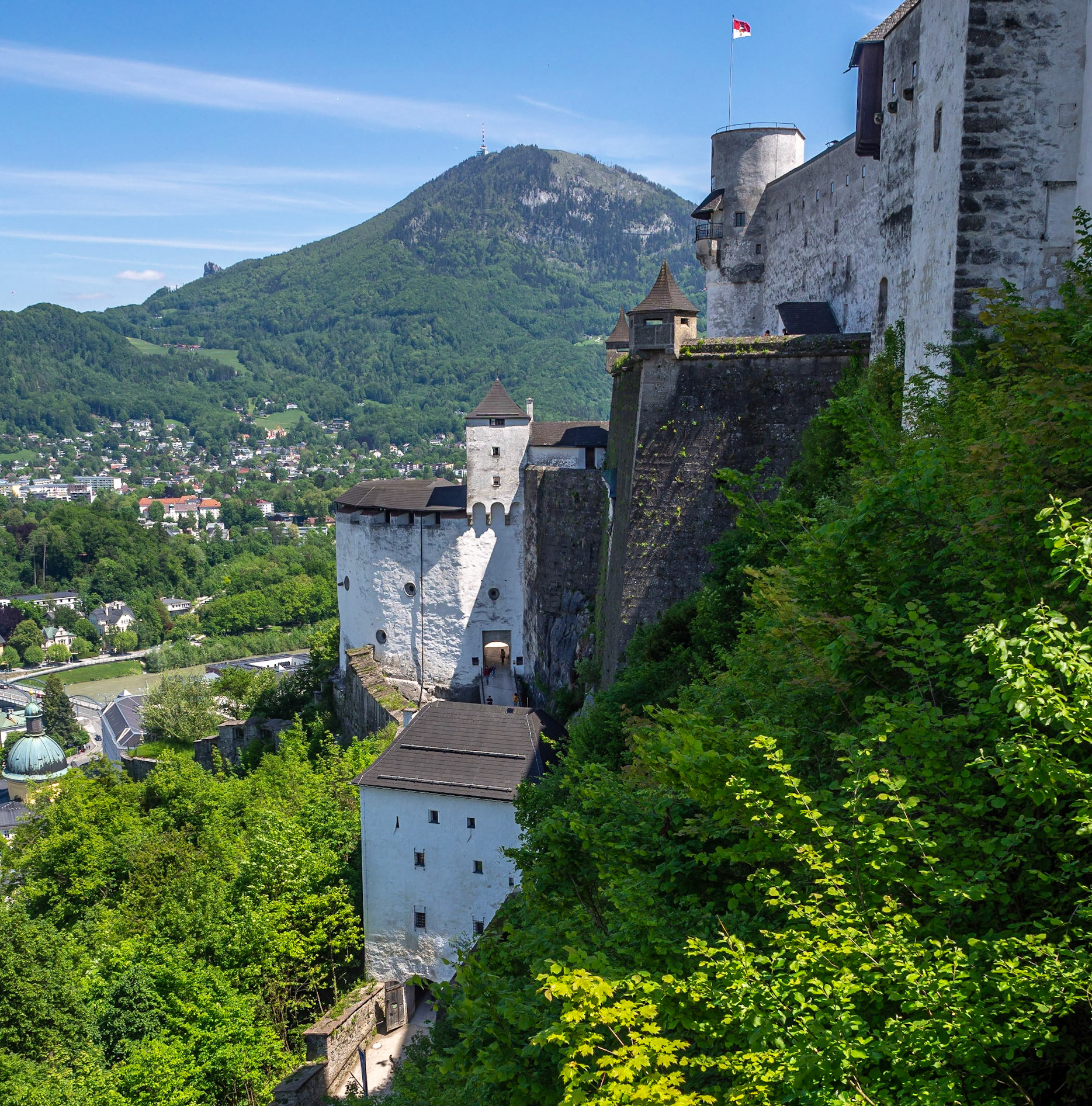
One side of the fortress
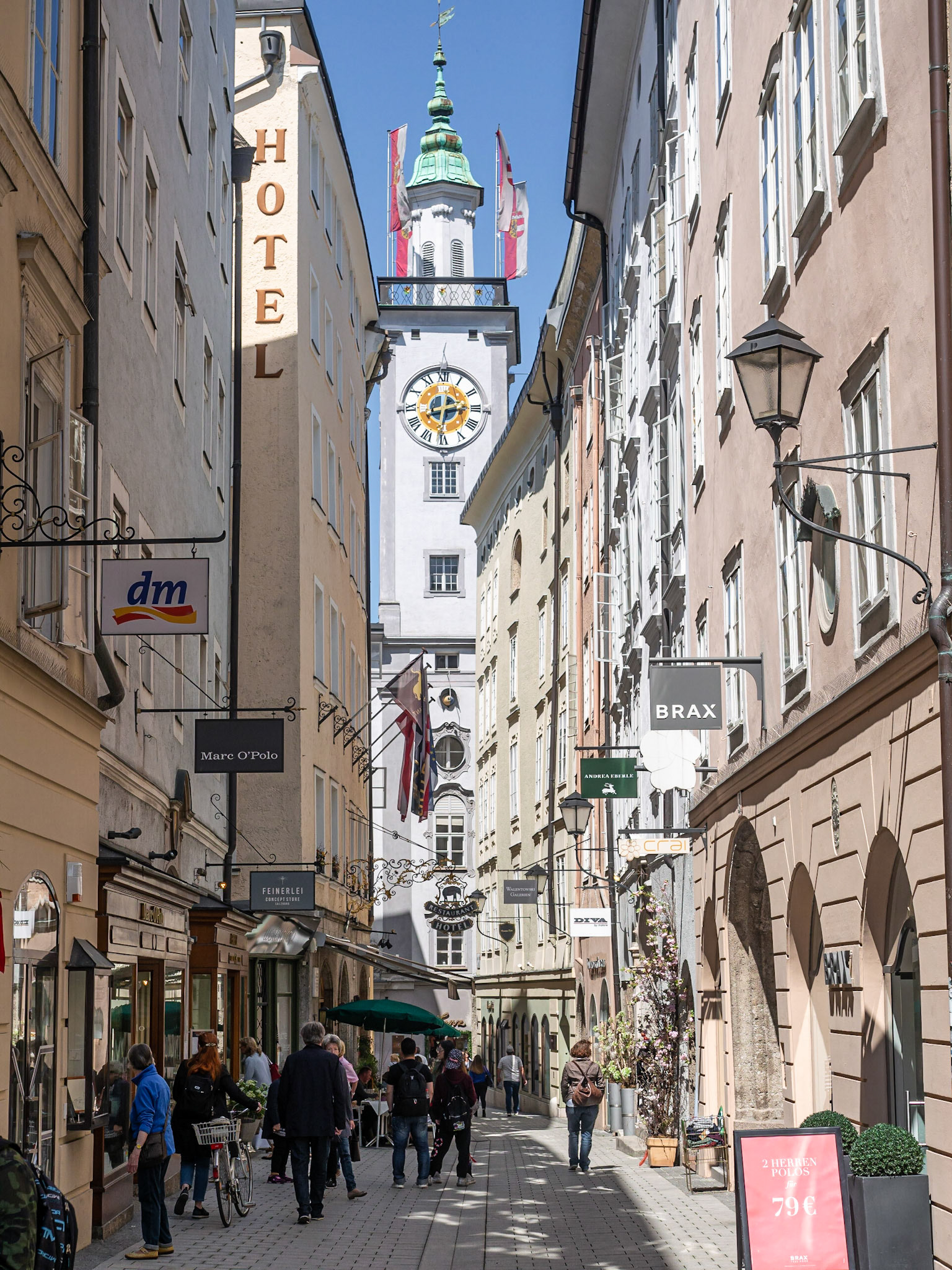
Salzburg old town hall at the end of a street full of shops

Another familiar scene from Mirabell Gardens that is in "The Sound of Music"
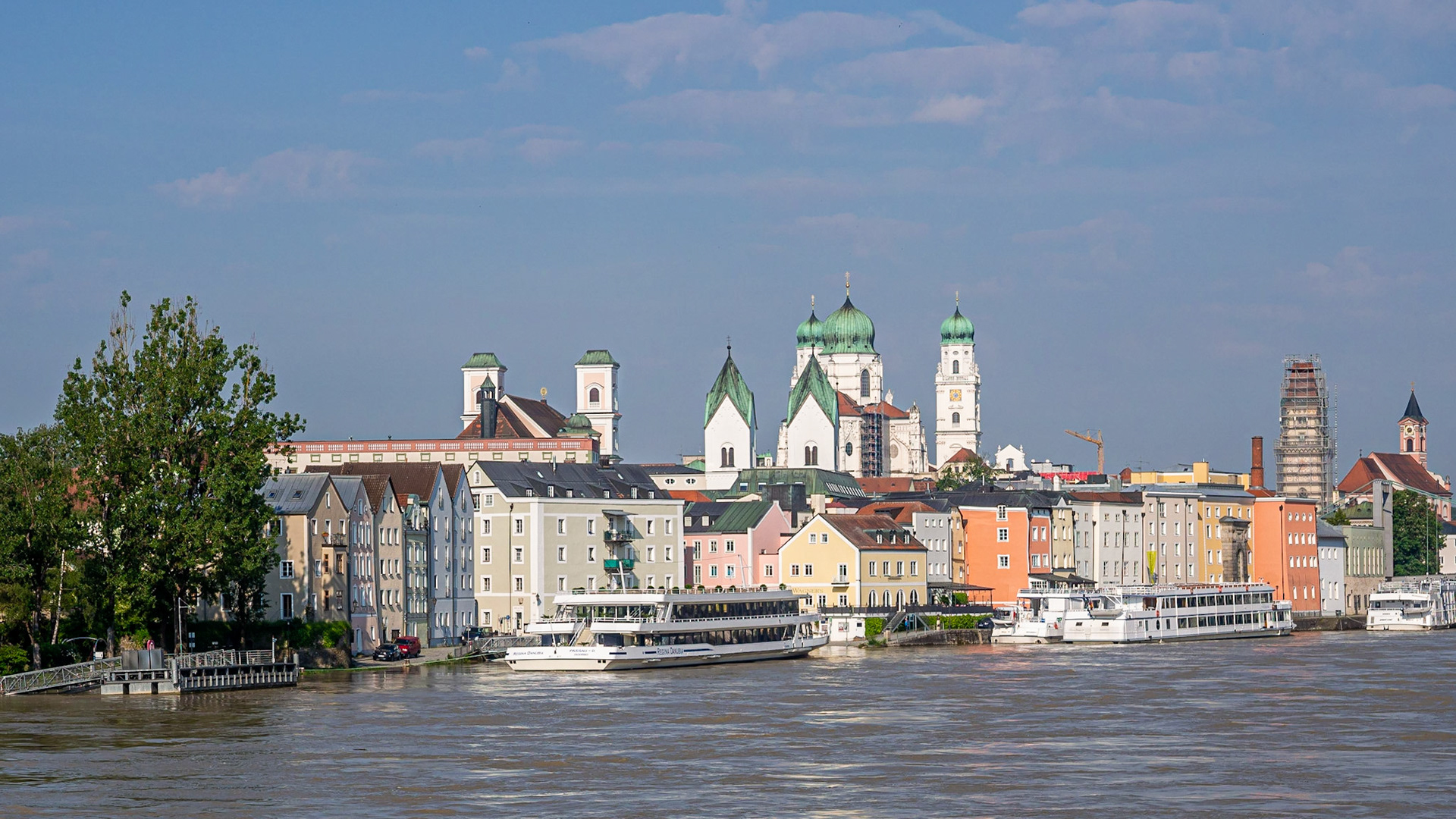

St. Stephen's Cathedral, built from 1668 to 1693. It has the largest organ outside the U.S.

Inside St. Stephen's Cathedral
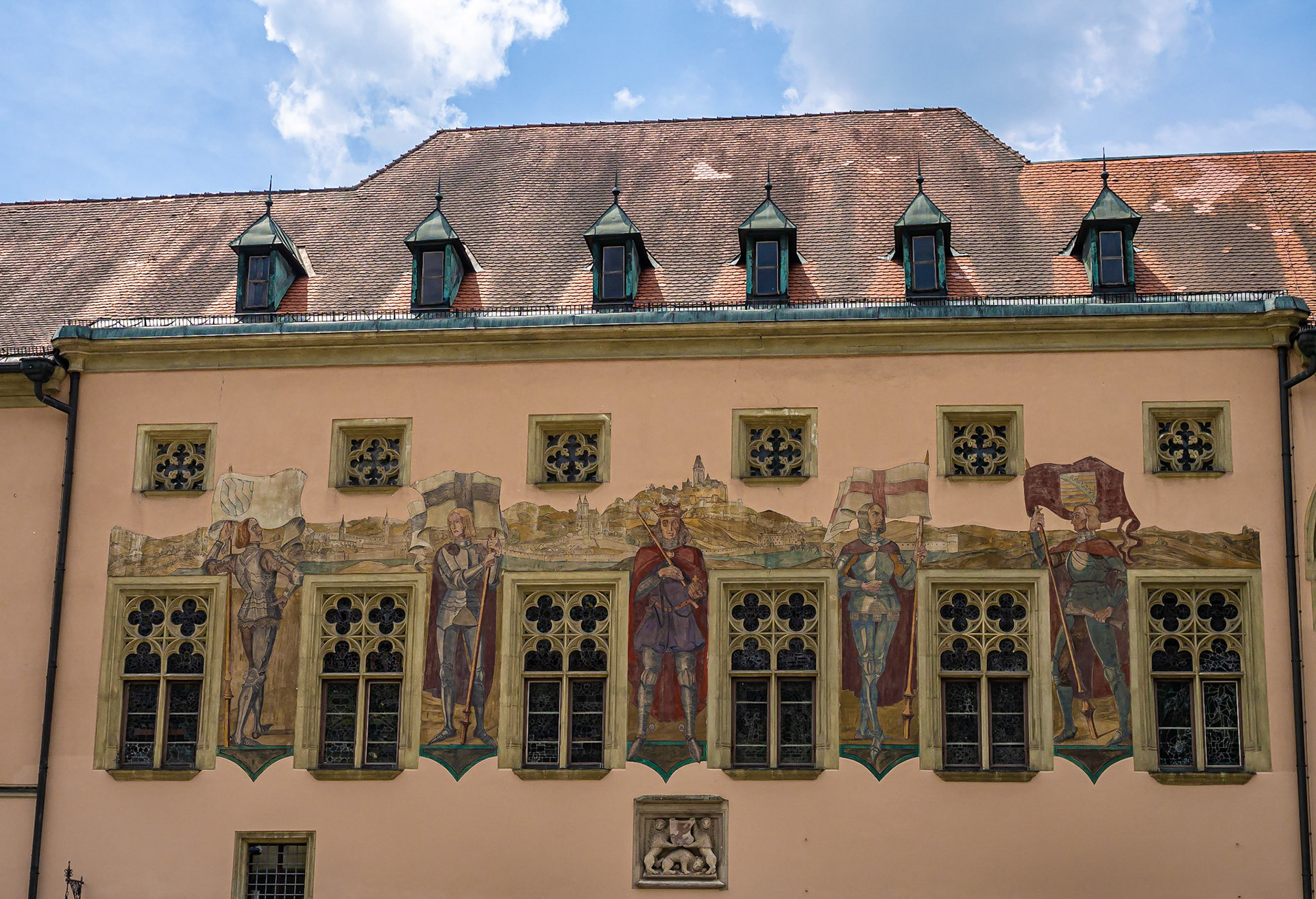
The very Medieval look of Passau's Old Town Hall

Traveling in May, we saw lots of Maypoles, a very European tradition, in both the smaller villages and larger cities we passed on our journey. Here's one in the town square of Hals.
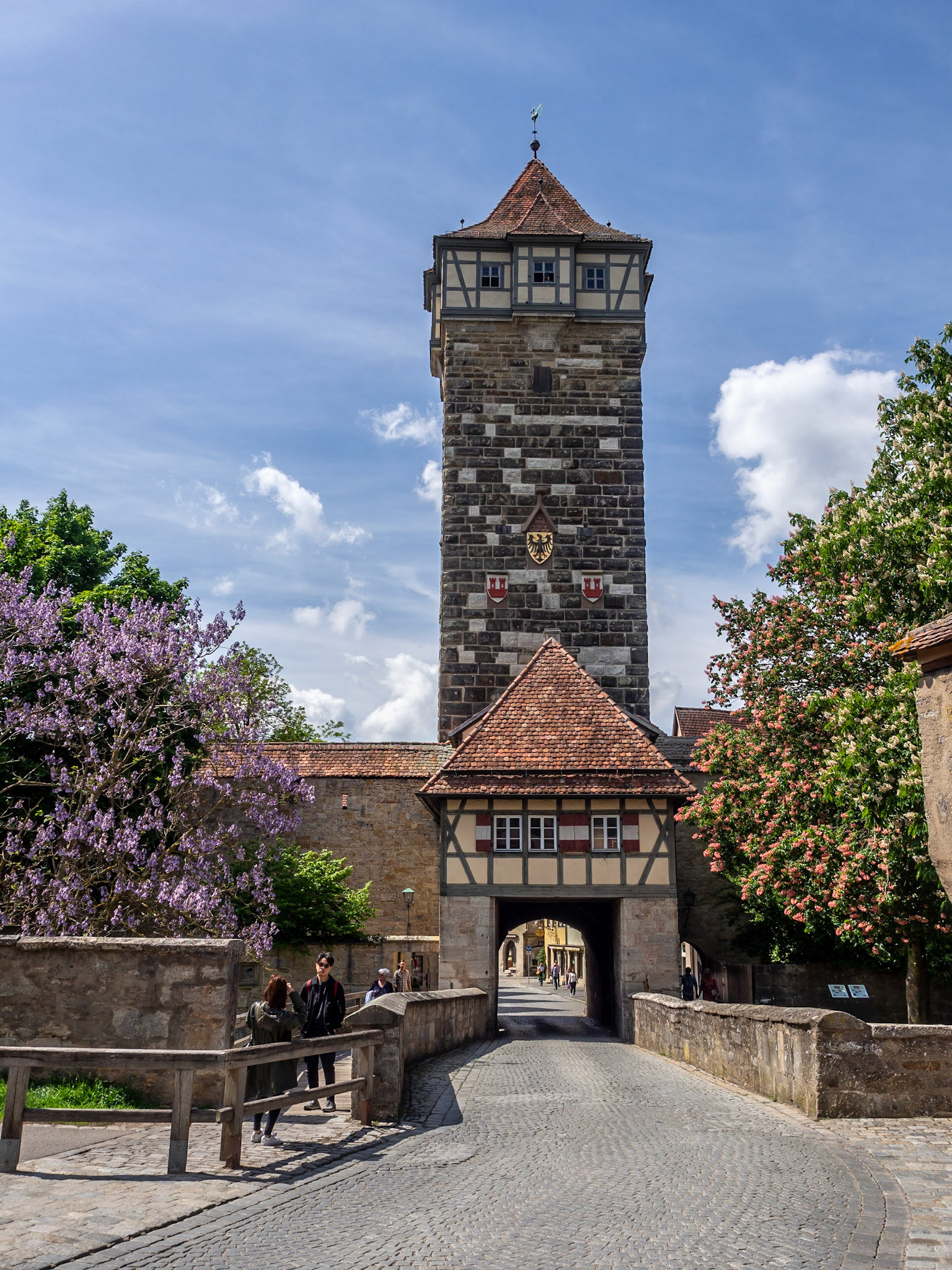
Röder Gate and Tower - This town gate dates from the 14th Century and still has its toll booth and gatekeeper's cottage. The tower is the only lookout tower along the city walls.

View of Rothenburg from the top of Röder Tower

From the top of Röder Tower. New wind turbines in the distance contrast with the old walls of the city.
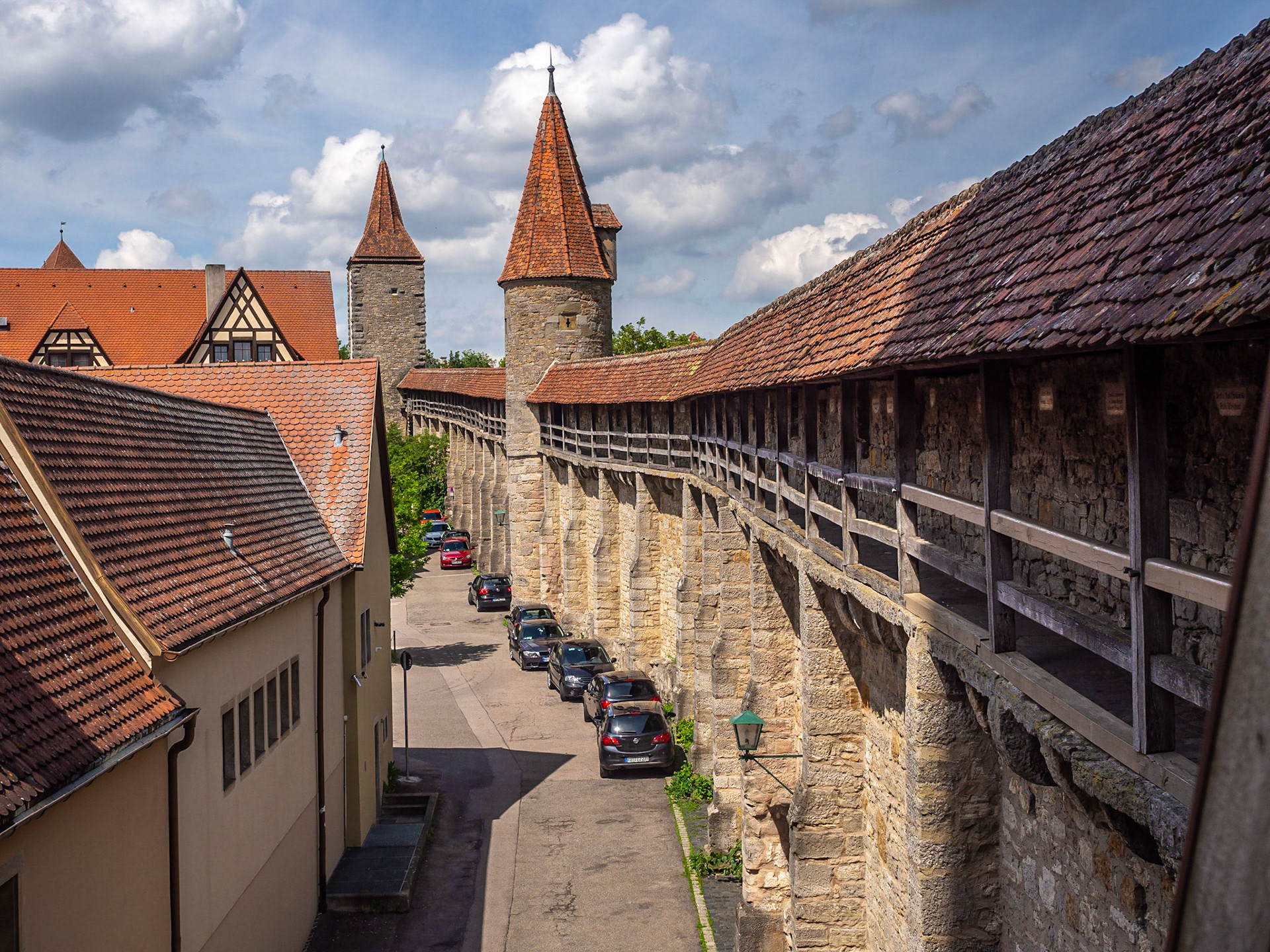
On the city wall

Street performer and his musical dog

Town Hall and a town museum of the Thirty Years' War

The Market Square

East side of Market Square

Inside St. James' Church

Röder (Roeder) progeny standing on their street corner. The forefathers would be so proud!

Röder Arch and Markus Tower (with stork nest atop it)

Plönlein (Little Square) is one of the most popular photo places. Beyond is Siebers Tower (dating back to 1385) that was part of the "new" fortifications. It's easy to see why Rotherburg has been the location or inspiration for scenes in Disney and other films.

The Night Watchman

Overlooking the southern part of Rothenburg ob der Tauber as the sun begins to set behind us

Röder Arch and Markus Tower with stork sitting on nest

Medieval Old Town Hall. At the base of the Valley Fort Tower shown here was one of the five original city gates in the city’s first protective wall.

Inside St. Peter’s Church, home of the city’s oldest parish founded even before the city was settled in the 700s

The gem-covered skeleton of St. Munditia – Murdered in 310 A.D., she was eventually decorated in 1675 before being placed in St. Peter’s. It is said that Munich is only second to Rome in its number of relics.

Frauenkirche with its twin towers – constructed starting in 1468 in place of the smaller Mary’s Church, and paid for partially through the sale of indulgences in Munich. Munich, in Catholic Bavaria, wanted to make a statement to the rest of mostly Protestant Germany with the size of its new church which seats 20,000, far more than the entire population of Munich at the time.

Gothic-style New Town Hall (built in the latter 1800s) seen from top of St. Peter’s Church. Several times a day, the Glockenspiel midway of its tower re-enacts in miniature a jousting tournament at a wedding festival of the Middle Ages important in Munich’s history.
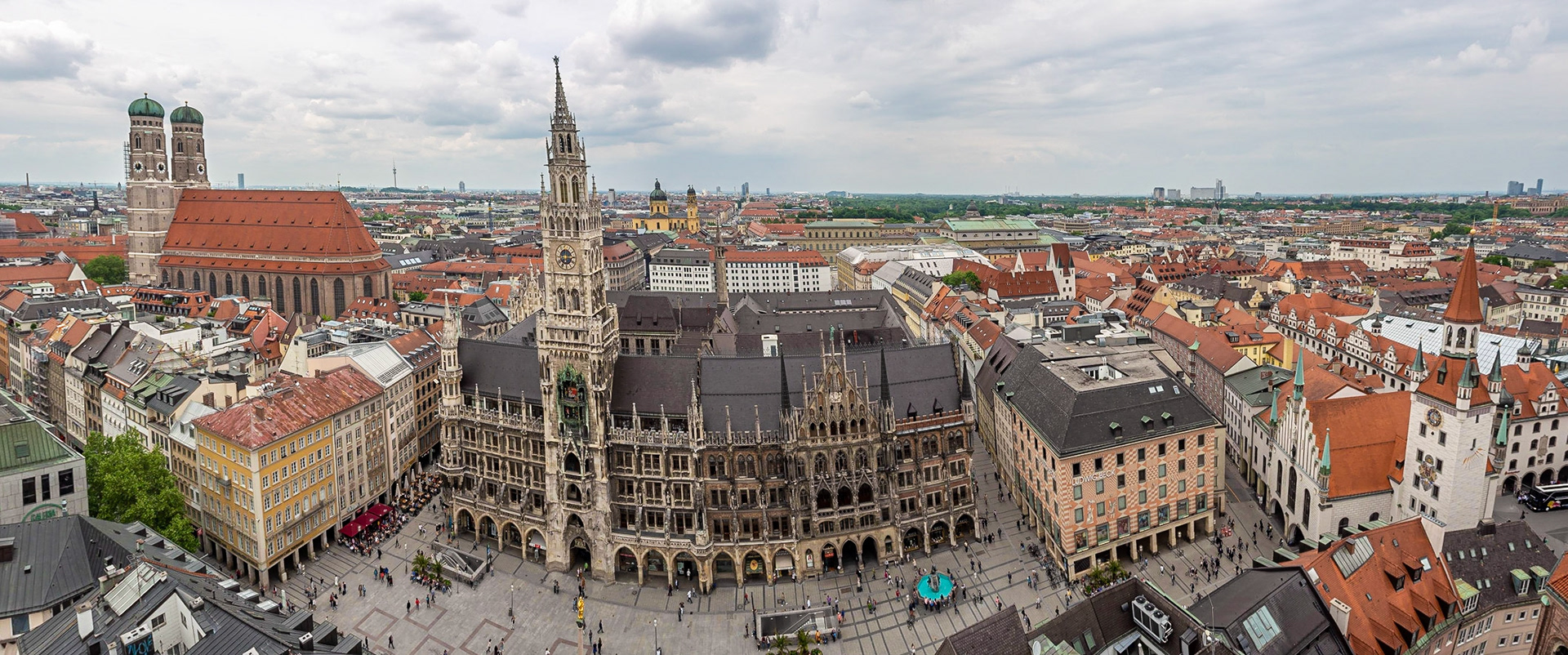
View of Marianplatz from top of St. Peter’s church; left to right are Frauenkirche, New Town Hall, and Old Town Hall

A street artist in Marianplatz sits perfectly still as the crowds buzz around him. He watched as we walked by headed to the bahnhof to board the train to our hotel near the airport. The next morning we’d say goodbye to this little piece of Europe and head back home. Cousins' Cruise 1.0 was the perfect combination ofpropiety and "tomfoolery" (It was a cousins' cruise after all!). It was exciting and relaxing, busy and laid back, rainy and sunny, old friends and new friends – just the right mix for a splendid “holiday."
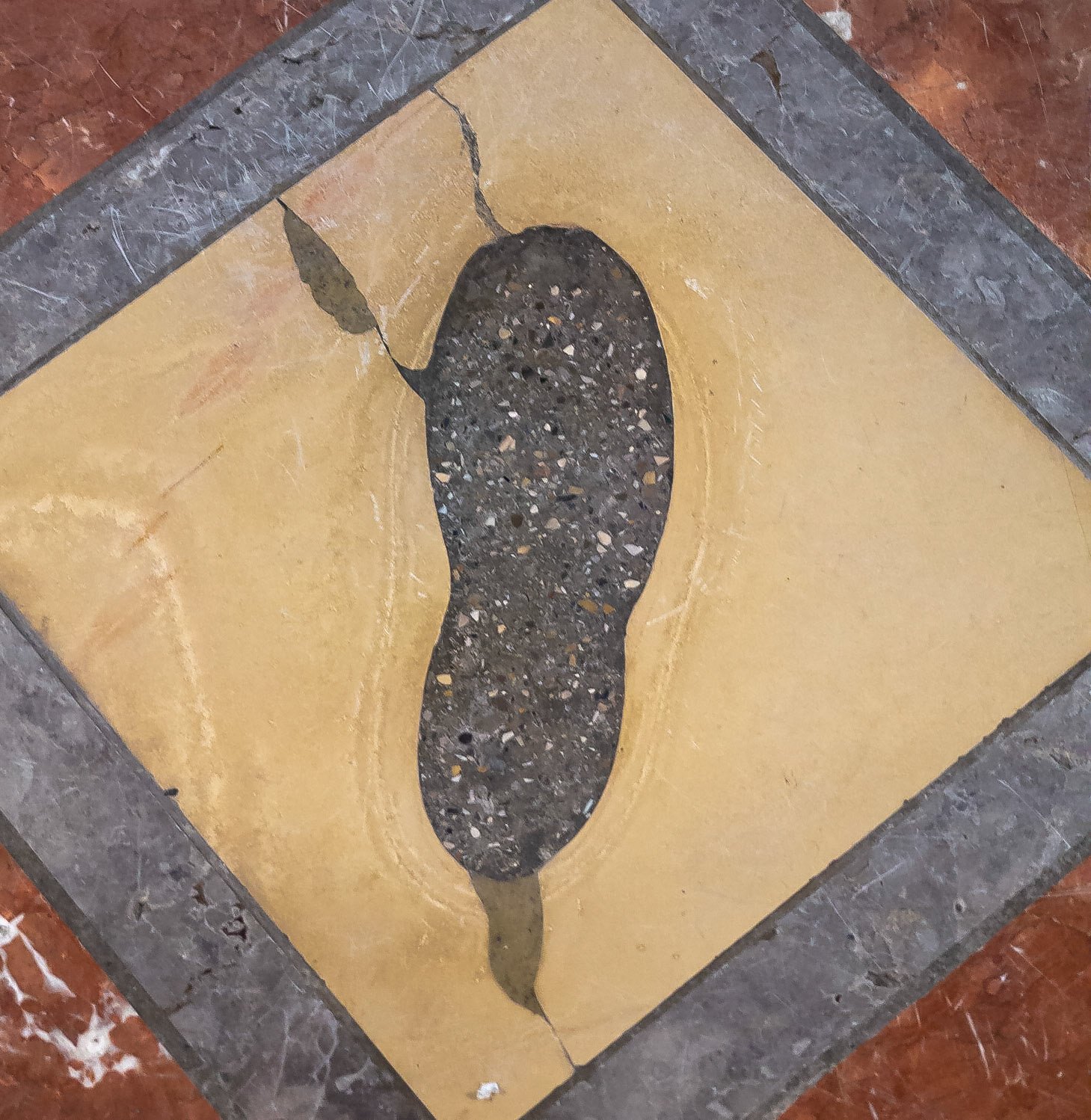
The Devil’s Footprint inside Frauenkirche. Legend says that when money ran out, the architect bargained with the Devil to help fund construction in exchange for a dark, windowless structure. At the end of construction, the Devil entered seeing no windows, but discovered the architect had placed the columns to hide the windows upon entry. When he learned he’d been tricked, he stomped his foot so hard that the floor still bears the imprint.
